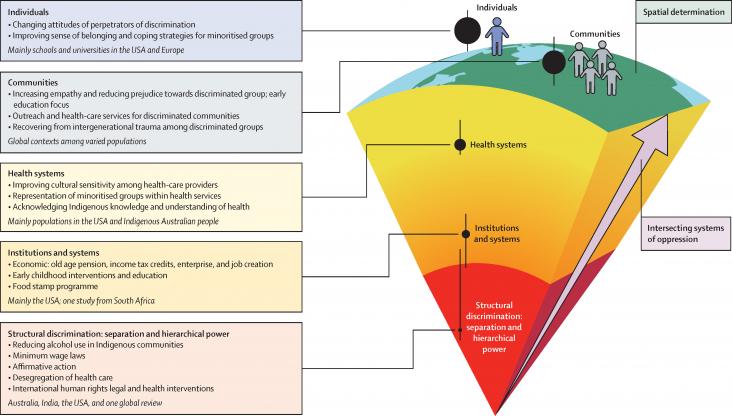Dismantling racism in health care demands that medical education promote racial justice throughout all stages of medical training. The development of any anti-racism curriculum in medicine requires the ability to identify racial bias in practices we have not previously recognized as explicitly racist or unjust.
This falls along the themes of public access (or lack thereof) to physicians has many different consequences to good health and well-being especially with cancer care.
This paper shows that although climate policies can sometimes slow the pace of economic growth, in the long term the benefits of avoided climate change impacts will overweight policy costs
This viewpoint supports SDGs 3, 5, 10 and 16, focusing on the drivers of Black maternal mortality and advocating the collection of disaggregated data to support improvements in Black maternal health.
Experts in the field, along with patient representatives from the Sarcoma Patient Advocacy Global Network (SPAGN), met at an international consensus meeting in 2022 to define best clinical practice of tenosynovial giant cell tumour (TGCT). Although usually not life-threatening, TGCT may cause chronic pain and adversely impact function and quality of life. A global effort is needed to make active systemic treatments available to TGCT patients worldwide and avoid discrimination.

This Series paper supports SDGs 3 and 10 by focusing on wider societal action to confront the health effects of racism, highlighting that broader, deeper, transformative action is needed compared with current measures to tackle the adverse effects of racism on health.
This Article supports SDGs 3 and 10 by showing that, globally, Black women are at higher risk of adverse perinatal outcomes of neonatal death, stillbirth, preterm birth, and small-for-gestational-age babies than White women, even after adjusting for maternal characteristics. Moreover, these racial disparities in perinatal outcomes were consistently observed across all geographical regions.
An ongoing challenge in HIV-1 vaccine research is finding a novel HIV-1 envelope glycoprotein (Env)-based immunogen that elicits broadly cross-neutralizing antibodies (bnAbs) without requiring complex sequential immunization regimens to drive the required antibody affinity maturation.
Cabotegravir (CAB) is an integrase strand transfer inhibitor (INSTI) formulated as a long-acting injectable drug approved for pre-exposure prophylaxis and use with a long acting rilpivirine formulation for therapy in patients with virological suppression. However, there has been no comprehensive review of the genetic mechanisms of CAB resistance. Studies reporting the selection of drug resistance mutations (DRMs) by CAB and the results of in vitro CAB susceptibility testing were reviewed.
This Article supports SDG 8,9 and 10, by examining the direct relation between economic inequity and burden of disease due to air pollution in India considering time trends from 2011-2019.
